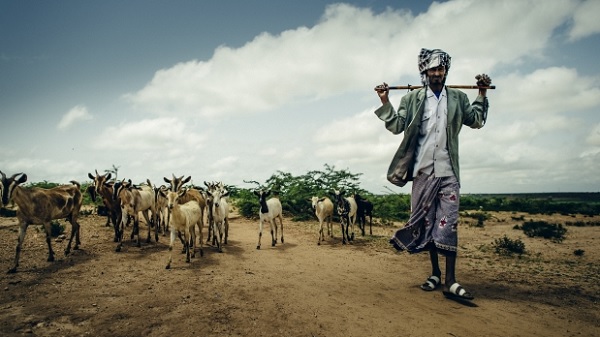
In 2016 in Ethiopia, Feed the Future’s investments to build resilience programs helped the country mitigate drought.
(Feed the Future)–Drought is a perennial feature of the Horn of Africa. For families who live in this region of East Africa, it means dealing with major shocks regularly—shocks that make it difficult to ever really escape poverty, despite their best efforts.
Many make a living as farmers and pastoralists, relying on the earth and the skies for income and food. When the rains don’t come, livestock and crops die. As families face this hardship year in and year out, they lose their ability to bounce back and have to turn to outside assistance to survive.
The odds are stacked against countries that regularly have to deal with drought, but they are shifting. Feed the Future is helping vulnerable families break this cycle of hunger and poverty.
A range of development activities in areas of recurrent crisis like the Horn of Africa are helping bring about lasting change and making it possible for families to escape poverty for good. Results are beginning to emerge and point to positive changes in areas reached by these activities.
Resilience Amid Drought
Drought is intensifying once again in the Horn of Africa. Millions of people in the region are at risk of starvation. Food and water prices are rising. The crisis is straining national governments, the international humanitarian response community, and neighboring countries, and shows no signs of letting up.
But in countries like Kenya and Ethiopia, proactive drought management measures—put in place after the drought and resulting food crisis of 2011—have enabled early response to recent droughts and worsening conditions, preventing the situation from becoming as dire as it could be.
READ: Drought – The New Normal in East Africa? Should the Indian Niño Be Blamed for Drought?
In 2016 in Ethiopia, Feed the Future’s investments to build resilience helped the country mitigate drought. During that drought, Feed the Future regularly collected data from households in areas reached by resilience programs. What it found was promising: Among households that experienced the most severe drought conditions, those in communities reached by comprehensive resilience programs experienced a minimal decline (4%) in their food security, while other households declined significantly (30%).
Read the complete story at Feed the Future
——
See also:
- Saving Lives in El Niño-hit Ethiopia
- Ethiopia Taking Steps to Address Drought Conditions
- NDRMC: The Number of Drought Affected People Reaches 7.6 Million
- Minister James Wharton: UK Will Stand by People of Ethiopia Affected by Severe Drought
- Drought: The New Normal in East Africa? Should the Indian Niño Be Blamed for Drought?
